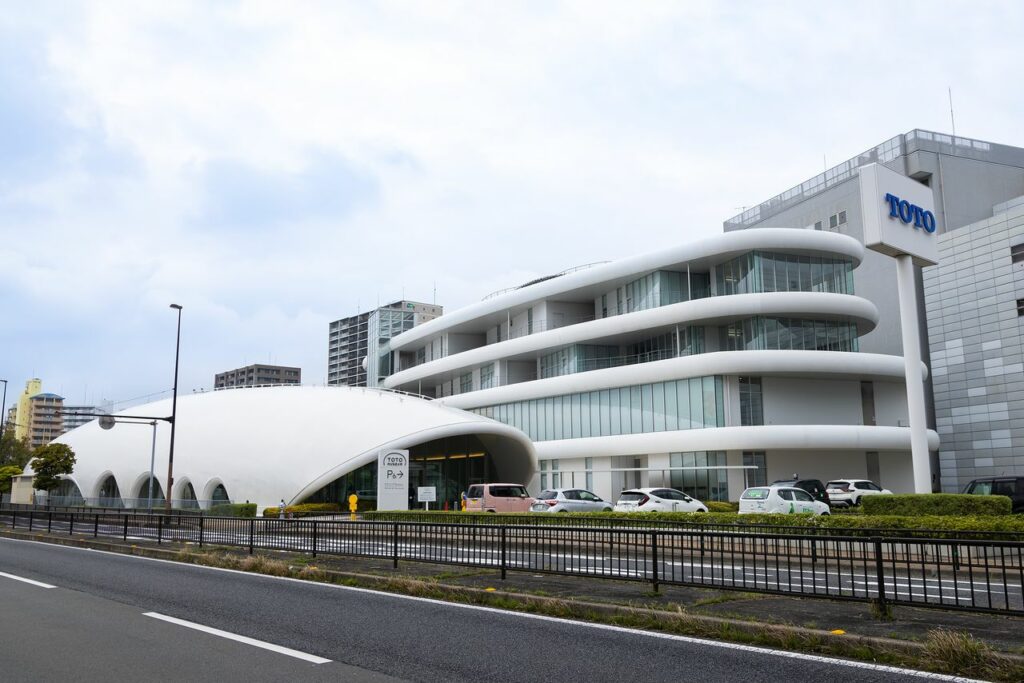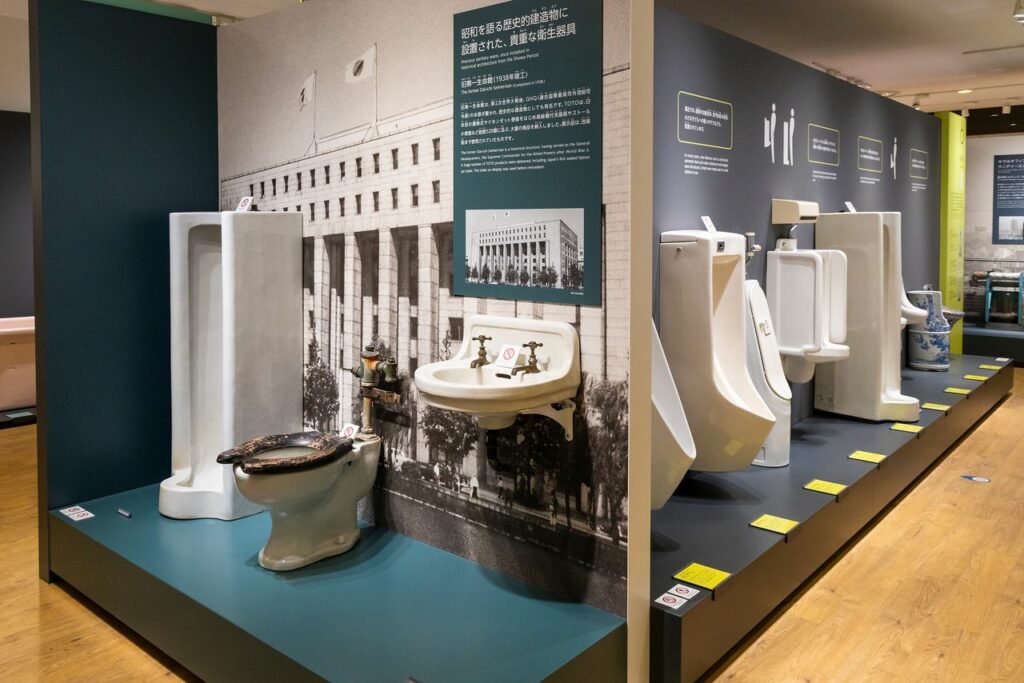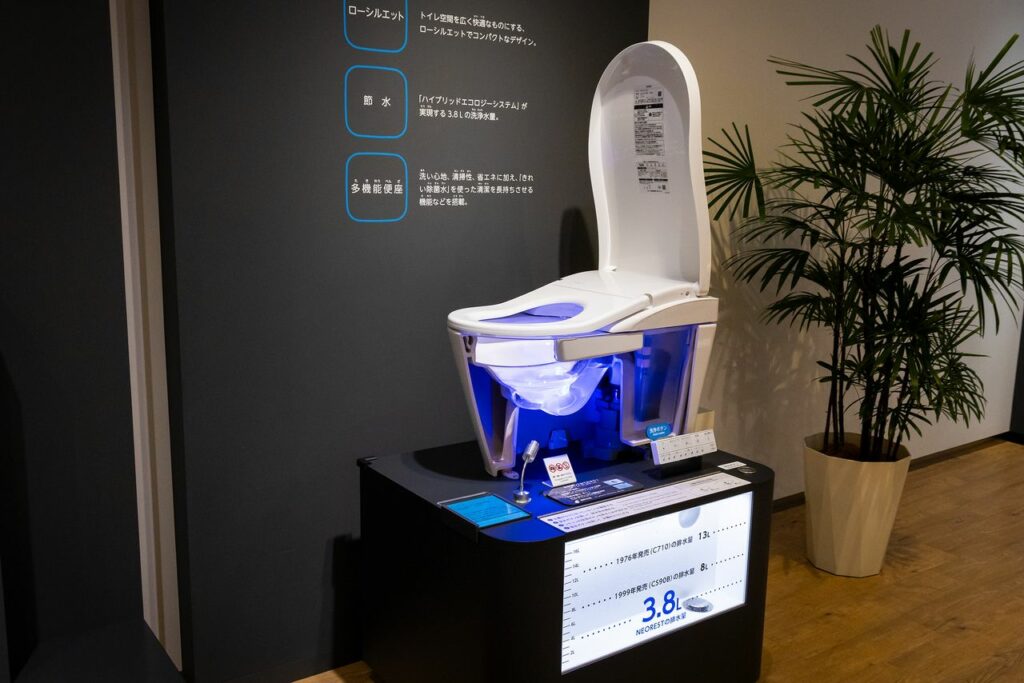From the origins to the present day
The Japan National Tourism Organization estimated that about 18 million tourists visited the nation in the first half of 2024, much exceeding the record-breaking 31 million visitors in the same time of 2019. “The pleasant toilets” was a common response to surveys asking the growing number of tourists what they liked best about their trips.
However, many have said that bathroom issues were a barrier to the rise of tourism until 2013 when Japan first surpassed 10 million foreign visitors. The biggest problem was the prevalence of washiki, or conventional squat-style, restrooms in public spaces. Many Western tourists avoided using the restrooms at tourist attractions, parks, and train stations because they were not accustomed to the style, which can be difficult on untrained legs and knees and prone to soiling.
In addition, as explained here, the city started installing Western-style sit-down toilets in public areas in 2013 after the 2020 Tokyo Olympics were declared. The majority of those also had Japan’s renowned warm-water bidet seats, which instantly transformed the Japanese capital from a toilet throwback to a global leader.














It is important to remember the efforts made by private companies to increase the functionality of Western-style toilets during that era and to promote their adoption. Toto, a household fixture company that created the country’s first sit-down toilets for homes, has remained a pioneer in the Japanese toilet market, especially by popularizing its warm-water “Washlet” bidet seats.
Exhibits at the Toto Museum, located on the grounds of the company’s headquarters in Kitakyūshū, Fukuoka, describe not only the company’s history and products but also the evolution of toilet culture in Japan. It is an intriguing addition to any Kyūshū tour.
Porcelain maker
A range of toilets may be found in Exhibition Room 1, including the first-generation Washlet, which was introduced in 1980, and Japan’s first sit-down flushing toilet, which was created in 1914. Initially, Toto was the sanitary ceramics branch of Nippon Tōki Kaisha, which is now Noritake, a tableware manufacturer.
Nippon Tōki was established in 1904 as the Morimura Gumi trading company in the village of Takaba, Aichi Prefecture, by Morimura Ichizaemon, his brother-in-law Ōkura Magobē, and other family members. Kazuchika, the son of Magobē, served as the company’s first president.
The importance of sanitary porcelain objects for the pleasant, clean way of life in Europe was observed by the Ōkuras on a tour. However, because Japan still lacked a sewage system, the company’s leaders were against entering the market because they did not see any need.
Nevertheless, the father and son persisted, and in 1912 they personally provided funding for the establishment of a research lab on porcelain production on the company’s grounds. A little more than two years after they began studying sanitary porcelain, they finished the first sit-down flushing toilet ever constructed in Japan.
Tōyō Tōki, a sanitary porcelain manufacturer, was established in Kokura, Fukuoka Prefecture, in 1917 by Ōkura Kazuchika. In addition to being close to clay and porcelain stone sources in Amakusa, Kumamoto Prefecture, and Korea, he chose that location because it was close to the Chikuhō coal fields for simple firing fuel. It was also conveniently located near the international trading port at Moji in Kitakyūshū, which provided access to markets in China and Southeast Asia.
The entire range of Toto’s items throughout history is on display in Exhibition Room 2, which shows how plumbing has changed in Japan. Following the Great Kantō earthquake in 1923, there was an increase in demand for sanitary porcelain in Japan. The construction of larger structures and more extensive sewerage as restoration operations advanced caused a sharp increase in the demand for porcelain toilets.
As a result, the need to produce metal faucet fixtures domestically becomes increasingly urgent. For porcelain sanitary equipment to work properly, the right metal hardware is required; therefore, Toto started manufacturing its faucets and accessories in 1946. The company then moved into sinks, shower stalls, and completely equipped unit bathrooms before becoming a manufacturer of everything associated with indoor plumbing.
The postwar economic boom brought with it an increase in the number of public housing units that required flush toilets, kitchens, and baths. All-in-one “unit bathrooms” first appeared as a result of the hotel construction boom brought on by the 1964 Tokyo Olympics. Standardized “sanitary unit” restrooms for office buildings were created as high-rise buildings proliferated.
In 1969, Tōyō Tōki shortened its company name to Toto, and in 1970, it changed its name to Tōtō Kiki. Lastly, in 1977, Toto’s sit-down toilet sales surpassed those of Washiki toilets.
From “wiping” to “washing”
With the introduction of the Washlet in 1980, Japan’s toilet culture underwent a significant transformation. Of all the warm-water bidet toilet seats in Japan, Washlet is by far the most well-known and is a registered trademark of the Toto Corporation. Its expansion of the market for such devices to common homes and offices is one of its biggest contributions to toilet culture.
A well-known celebrity said the catchphrase that made the Washlet famous in its 1982 dinnertime television ad: “Oshiri datte, aratte hoshii” (your bottom wants to be washed). By the way, the name Washlet is the reverse of the English expression “Let’s wash,” which refers to something related to your backside. So, customers in Japan started switching from “wiping” to “washing”.
These “backside washers” have evolved to include self-cleaning features, ozone deodorization, and nozzle position adjustments, and they are now almost universal.
Growth before profit
All of the technological advancements stem from the vision of founder Ōkura Kazuchika, who merely wished for people to live “pleasant, sanitary lifestyles.” The company’s connection with its rival producer Inax, which is now known as Lixil, is the clearest example of that.
Beginning as potters in Tokoname, Aichi Prefecture, the Ina family provided technical support for the construction of the Frank Lloyd Wright-designed main building of the Imperial Hotel before starting to make porcelain for construction businesses.
In 1924, the Ina Seitō company began as a tile factory under the Morimura group, and Ōkura provided financial assistance for that change. The original chairman of the board was Ōkura Kazuchika, who provided funding for the establishment and periodically provided personal funding to keep it running.
Ina Seitō started refining its production methods during World War II by producing sanitary porcelain for the military. After consulting with Ōkura on the potential dispute with another group company, Tōyō Tōki, he gave his approval for the company to go independent, stating that a friendly rivalry would promote industry progress.
As a result, Ina Seitō has developed into today’s Lixil (with its well-known trademark Inax), posing a serious threat to Toto in terms of both quality and technology. Japan is now the world leader in toilets, thanks to these two significant producers.
The realization of Ōkura Kazuchika’s vision of a “pleasant, sanitary life” must undoubtedly be this. The Toto Museum demonstrates how the employees’ unwavering perseverance and unquenchable inventiveness made that ambition a reality.

